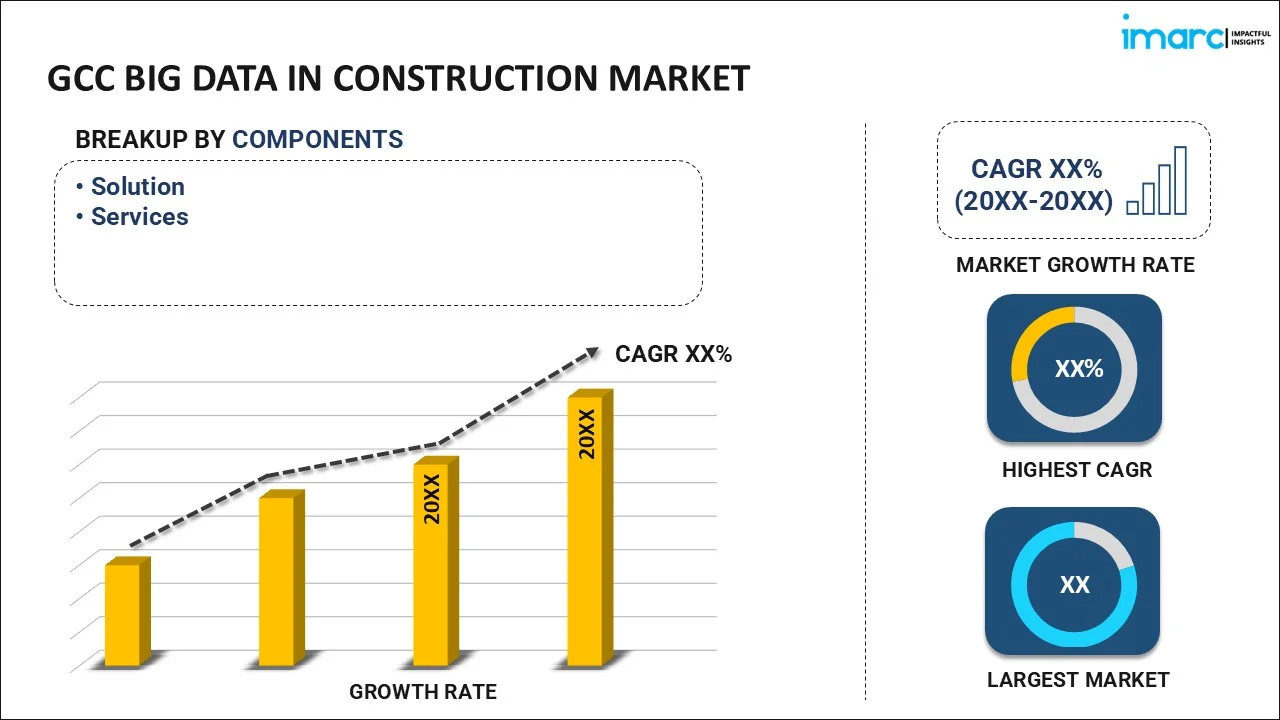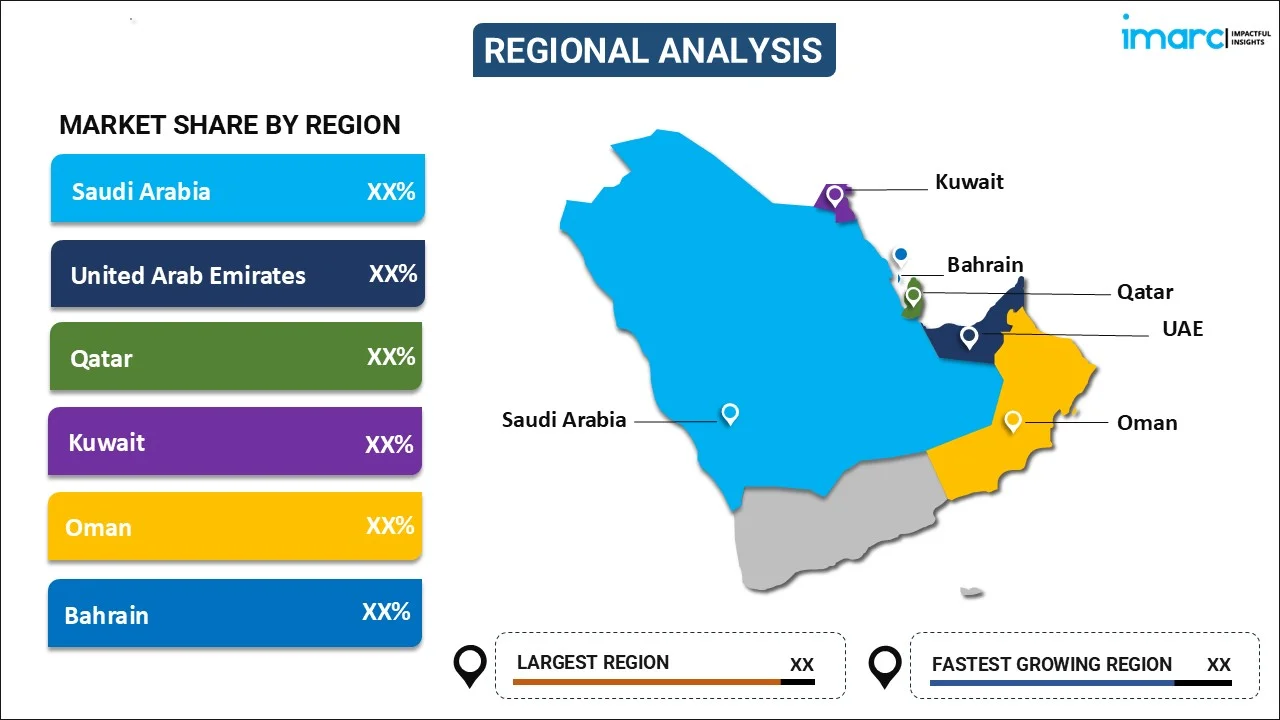
GCC Big Data in Construction Market Report by Component (Solution, Services), Deployment Mode (On-premises, Cloud-Based), Application (Project Management, Risk Management, Cost Optimization, Quality Control and Safety, Supply Chain Management, and Others), End-User (General Contractors, Subcontractors, Project Owners, Architects and Engineers, Government Agencies), and Region 2025-2033
GCC Big Data in Construction Market Overview:
The GCC big data in construction market size reached USD 253.5 Million in 2024. Looking forward, IMARC Group expects the market to reach USD 587.9 Million by 2033, exhibiting a growth rate (CAGR) of 9.80% during 2025-2033. The market is experiencing steady growth driven by rapid digital transformation, growing adoption of smart technologies, continuous government support for innovations, the increasing need for cost efficiency and resource optimization, and the expansion of smart city initiatives in the GCC construction industry.
|
Report Attribute
|
Key Statistics
|
|---|---|
|
Base Year
|
2024
|
|
Forecast Years
|
2025-2033
|
|
Historical Years
|
2019-2024
|
| Market Size in 2024 | USD 253.5 Million |
| Market Forecast in 2033 | USD 587.9 Million |
| Market Growth Rate 2025-2033 | 9.80% |
GCC Big Data in Construction Market Trends:
Adoption of digital transformation and smart technologies
With rapid digitalization in the GCC construction industry, big data is primarily adopted in construction. Growing smart cities and infrastructure development coupled with the augmenting need for the Internet of Things technology are increasing the need for further advanced data analytics for optimizing construction processes. With the existence of smart construction tools, which include building information modeling, AI-driven analytics, and sensor-based monitoring systems, tons of data are being collected, analyzed, and positioned for real-time use in actualizing decision-making. Big data enables companies to predict the outcome of projects, increase safety standards, manage resources more efficiently, and control costs by taking advantage of insights from historical and real-time data. As the Gulf Cooperation Council region continues pushing towards innovation and smart city initiatives, especially in nations such as the UAE, Saudi Arabia, and Qatar, big data analytics in construction are becoming indispensable to achieve long-term operational efficiency and sustainable growth.
Government initiatives and support for construction innovation
Governments across the GCC countries are encouraging technology and innovation to be used in the construction sector by launching various projects and funding opportunities. Big data solutions are a catalyst for large-scale projects such as the Expo Dubai or the NEOM smart city project in Saudi Arabia or Qatar. Large projects entail complex logistics, narrow time plans, and high investments, and for the delivery of such projects, data must be brought to the fore in making decisions to ensure that project delivery is optimal. Therefore, this is accelerating the demand for big data in construction. In addition to encouraging the adoption of technology in projects, governments are also investing in infrastructure, regulatory frameworks, and digital ecosystems to facilitate the implementation of big data tools.
Increasing demand for cost efficiency and resource optimization
Big data can assist companies in countering the rising costs in the construction industry by optimizing resource availability and increasing the efficiency of operations. The collection of data across the whole project lifecycle for a construction company makes apparent resource utilization, material waste, and inefficiency in supply chains. Big data enables them to make informed decisions that reduce overall costs. Along with this, predictive analytics combined with real-time tracking of data can help predict such potential issues, including delays, cost overruns, and budget constraints; hence the ability to address these issues in time. Construction firms use big data as most of them recognize that their survival in the competitive sector is essential, which is favoring the market growth.
GCC Big Data in Construction Market Segmentation:
IMARC Group provides an analysis of the key trends in each segment of the market, along with forecasts at the country level for 2025-2033. Our report has categorized the market based on component, deployment mode, application, and end-user.
Component Insights:

- Solution
- Services
The report has provided a detailed breakup and analysis of the market based on the component. This includes solution and services.
Deployment Mode Insights:
- On-premises
- Cloud-Based
A detailed breakup and analysis of the market based on the deployment mode have also been provided in the report. This includes on-premises, and cloud-based.
Application Insights:
- Project Management
- Risk Management
- Cost Optimization
- Quality Control and Safety
- Supply Chain Management
- Others
The report has provided a detailed breakup and analysis of the market based on the application. This includes project management, risk management, cost optimization, quality control and safety, supply chain management, and others.
End-User Insights:
- General Contractors
- Subcontractors
- Project Owners
- Architects and Engineers
- Government Agencies
A detailed breakup and analysis of the market based on the end-user have also been provided in the report. This includes general contractors, subcontractors, project owners, architects and engineers, and government agencies.
Regional Insights:

- Saudi Arabia
- United Arab Emirates
- Qatar
- Kuwait
- Oman
- Bahrain
The report has also provided a comprehensive analysis of all the major regional markets, which include Saudi Arabia, United Arab Emirates, Qatar, Kuwait, Oman, and Bahrain.
Competitive Landscape:
The market research report has also provided a comprehensive analysis of the competitive landscape. Competitive analysis such as market structure, key player positioning, top winning strategies, competitive dashboard, and company evaluation quadrant has been covered in the report. Also, detailed profiles of all major companies have been provided.
GCC Big Data in Construction Market Report Coverage:
| Report Features | Details |
|---|---|
| Base Year of the Analysis | 2024 |
| Historical Period | 2019-2024 |
| Forecast Period | 2025-2033 |
| Units | USD Million |
| Scope of the Report | Exploration of Historical Trends and Market Outlook, Industry Catalysts and Challenges, Segment-Wise Historical and Future Market Assessment:
|
| Components Covered | Solution, Services |
| Deployment Modes Covered | On-premises, Cloud-Based |
| Applications Covered | Project Management, Risk Management, Cost Optimization, Quality Control and Safety, Supply Chain Management, Others |
| End-Users Covered | General Contractors, Subcontractors, Project Owners, Architects and Engineers, Government Agencies |
| Regions Covered | Saudi Arabia, United Arab Emirates, Qatar, Kuwait, Oman, Bahrain |
| Customization Scope | 10% Free Customization |
| Post-Sale Analyst Support | 10-12 Weeks |
| Delivery Format | PDF and Excel through Email (We can also provide the editable version of the report in PPT/Word format on special request) |
Key Questions Answered in This Report:
- How has the GCC big data in construction market performed so far and how will it perform in the coming years?
- What has been the impact of COVID-19 on the GCC big data in construction market?
- What is the breakup of the GCC big data in construction market on the basis of component?
- What is the breakup of the GCC big data in construction market on the basis of deployment mode?
- What is the breakup of the GCC big data in construction market on the basis of application?
- What is the breakup of the GCC big data in construction market on the basis of end-user?
- What are the various stages in the value chain of the GCC big data in construction market?
- What are the key driving factors and challenges in the GCC big data in construction?
- What is the structure of the GCC big data in construction market and who are the key players?
- What is the degree of competition in the GCC big data in construction market?
Key Benefits for Stakeholders:
- IMARC’s industry report offers a comprehensive quantitative analysis of various market segments, historical and current market trends, market forecasts, and dynamics of the GCC big data in construction market from 2019-2033.
- The research report provides the latest information on the market drivers, challenges, and opportunities in the GCC big data in construction market.
- Porter's five forces analysis assist stakeholders in assessing the impact of new entrants, competitive rivalry, supplier power, buyer power, and the threat of substitution. It helps stakeholders to analyze the level of competition within the GCC big data in construction industry and its attractiveness.
- Competitive landscape allows stakeholders to understand their competitive environment and provides an insight into the current positions of key players in the market.
Need more help?
- Speak to our experienced analysts for insights on the current market scenarios.
- Include additional segments and countries to customize the report as per your requirement.
- Gain an unparalleled competitive advantage in your domain by understanding how to utilize the report and positively impacting your operations and revenue.
- For further assistance, please connect with our analysts.
 Inquire Before Buying
Inquire Before Buying
 Speak to an Analyst
Speak to an Analyst
 Request Brochure
Request Brochure
 Request Customization
Request Customization




.webp)




.webp)












